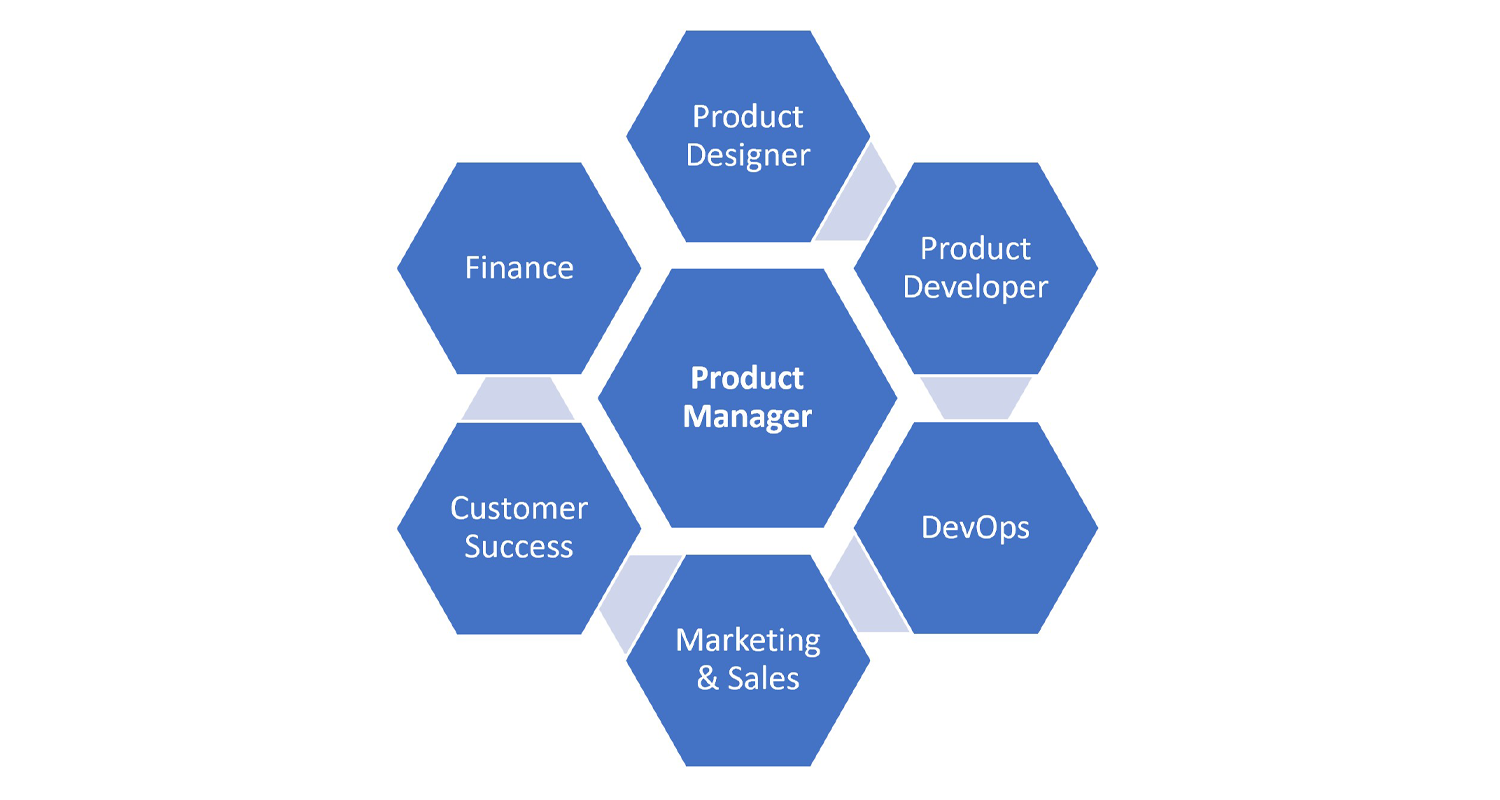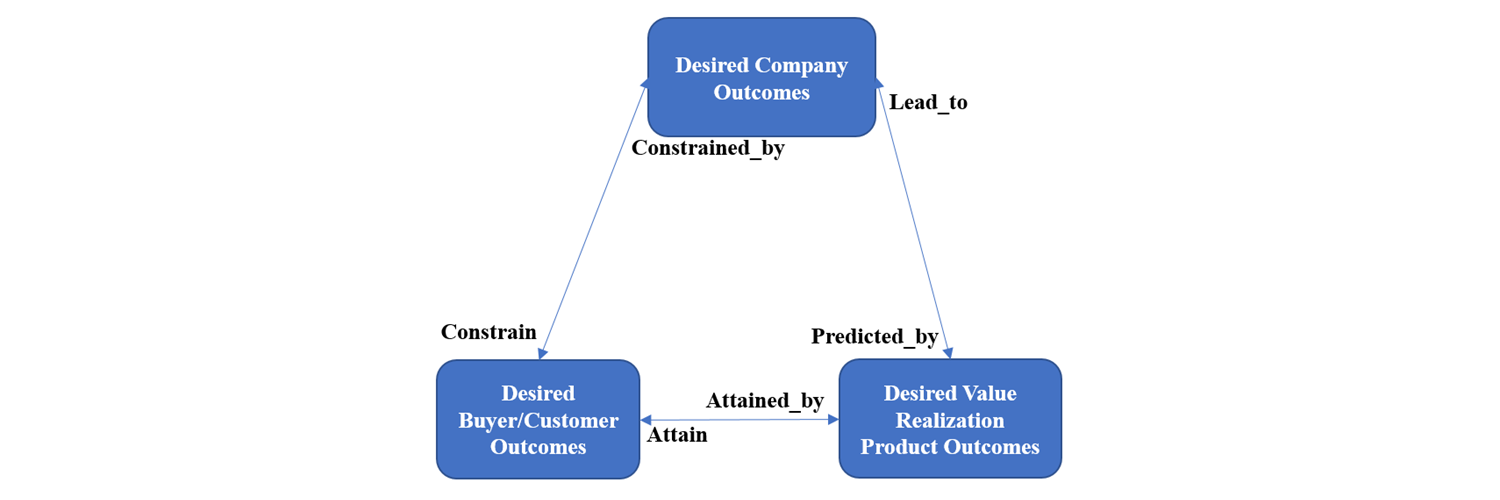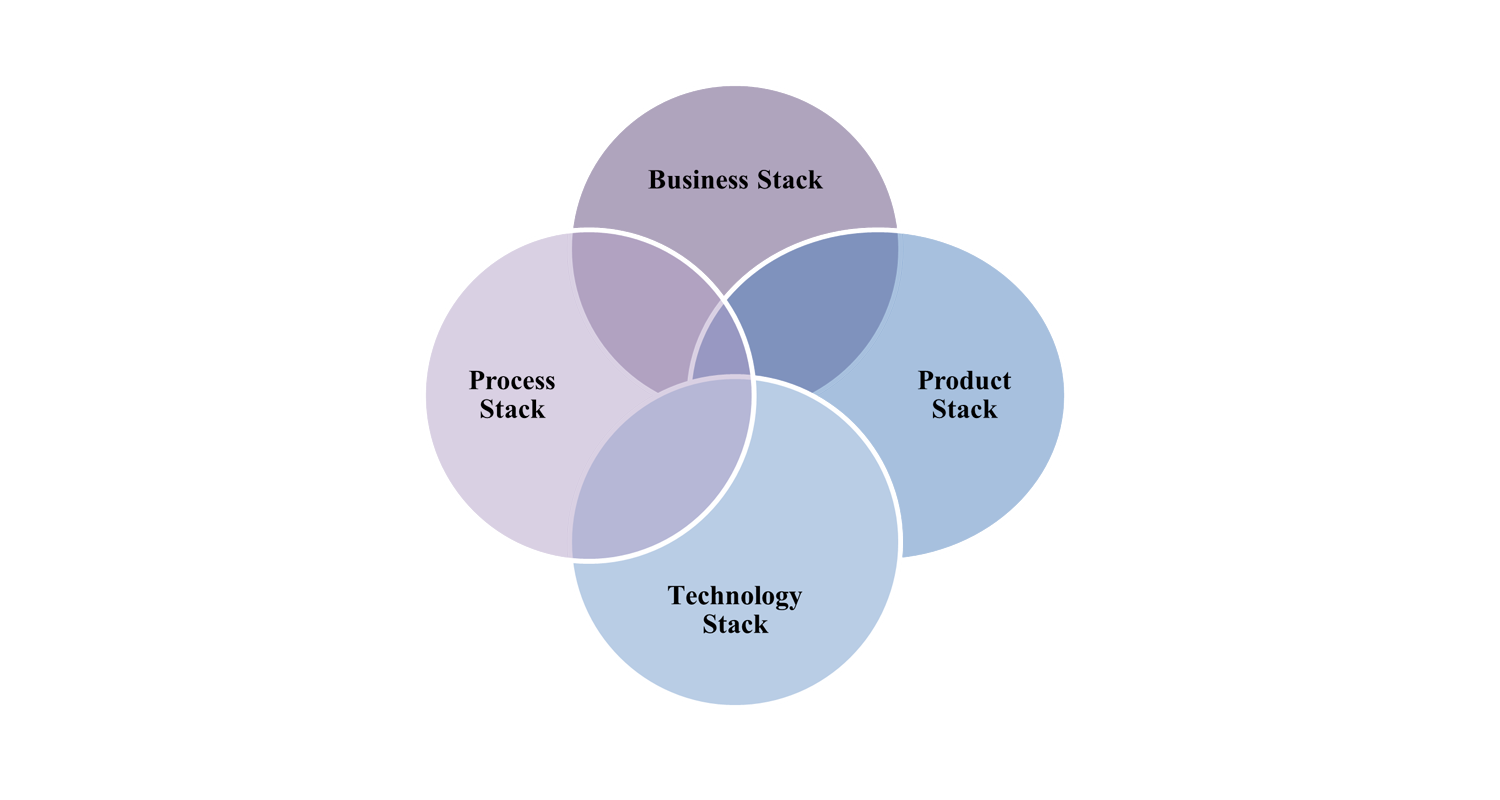In part 1 of this blog, I summarized the seminal work of my colleague Geoffrey Moore in defining whole product as “everything required to assure that the target customers can fulfill their compelling reason to buy.” I also indicated that the notion of whole product is central to a number of product management frameworks and models I have been developing, including the 5PMM (Five Product Movements Model) and the SaaS Product Imperatives Model. I outlined the key differences between the SaaS and on-premise models, in a B-to-B context, relevant to whole product.
These considerations have informed the extensive work I have done with B-to-B SaaS companies who are looking for a next level, more detailed expression of whole product in terms unique to SaaS. Informed by these collective experiences, I have been evolving a SaaS whole product framework that explicitly takes into account the nuances of SaaS. I introduce the SaaS whole product planning framework here and invite feedback. Clearly, a SaaS whole product evolves over time as your category and product mature. Most SaaS whole products begin with an early emphasis on platform, MVP level modular capabilities and the other necessary elements to delivery initial solutions. As SaaS whole products mature, advanced forms of value realization and necessary elements of engagement and ecosystem integrations begin to advance based on on-going customer discovery, competitive pressures, etc.
Figure 1 depicts the proposed B-to-B SaaS whole product planning framework. It begins with a platform and defines 8 areas of complementary products, services and experiences. SaaS product teams can use this framework to guide and direct the evolution of their whole product as their product category matures.

Figure 1: SaaS Whole Product Model
Platform: Successful SaaS companies leverage some form of platform, a factored out set of common services used across the product portfolio. Such platforms improve both time-to-market efficiency and overall product quality. SaaS platforms can also allow for streamlined acquisition and integration of complimentary systems. With on-premise systems, multiple technology stacks are a problem. But well-designed SaaS platforms can operate together in the cloud, often without material impact on the end user experience.
Most SaaS platforms leverage leading cloud platforms (AWS, Azure, GCP), COTS and open-source technologies. Platforms include elastic (automatically scaleable up or down) IaaS, PaaS and DaaS capabilities.
- IaaS are Infrastructure as a Service capabilities (computing, storage, bandwidth, etc.).
- PaaS are Platform as a Service capabilities including a broad array of components: data persistence, event management, UI components, web site accessibility compliance, workflow and policy management, reporting/BI, API and data integration services, BCP/DR, user/customer management (including user and group hierarchies), security/compliance, contract and billing management, etc. Security and compliance are a special class of PaaS and include identity/access management (including multi-factor authentication), SSO and appropriate application and governance security/compliance certifications (ISO 27001, SOC 1/2/3®, HITRUST).
- DaaS are Domain as a Service capabilities specific to a domain/industry. For example, an eCommerce vendor might have DaaS capabilities such as a shopping cart, wish list, etc.
A platform also manages, delivers and monitors the architectural “ilities” (scalability, reliability, availability, BCP/DR, performance, efficiency, etc.) critical to SaaS.
Platforms solve an important context problem for SaaS companies — making their applications reliably and economically scale in the cloud. Platforms free up scarce SaaS product resources to work on core value adding capabilities that directly address customer jobs to be done, drive customer business value outcomes, and create sustainable competitive advantage for the SaaS vendor.
Management of technical debt within the platform is critical, as it can quickly grow in a SaaS environment. For example, care must be taken to consider an appropriate tenant data approach in a multi-tenant environment (e.g., separate schemas per tenant vs shared schemas for all tenants, etc.), as it can be costly to change your data management approach. Platform service models vary depending on who the consumers of the platforms are: ranging from internal developers, to select customers/partners to fully open to 3rd party app developers. Salesforce.com and their Force platform is an example of a world-class platform-based SaaS company that is open to 3rd party app developers.
Modular Capabilities: Modular, integrated (plug-and-play) and configurable capabilities define SaaS core products. SaaS best practice provides such capabilities on a seamless “trial-then-buy” ala carte or bundled basis to be consumed at user discretion. Such capabilities are born out of customer discovery, competitive analysis or driving sustainable competitive advantage. SaaS modular capabilities include core capabilities that deliver customer value based on tasks be completed by persona-based users and crowd-sourced capabilities derived from the crowd-sourced possibilities that SaaS affords related to collaboration, communities of practice, aggregated data analytics and best practice models. In some cases, crowd-sourced, anonymized data analytics and intelligence provide value-added capabilities that offer a data monetization opportunity for SaaS vendors, provided such capabilities can be delivered in an opt-in, ethical and confidential manner. Zendesk is an excellent example of a modular, “trial-then-buy” SaaS product for support and sales. Airbnb and Hotels.com both offer examples of crowd-sourced capabilities for aggregated review analytics.
Buyer Journey: Buyer journeys are your buyers’ experiences with your company and product during the initial trial, purchase, and renewal processes through all communication channels and touch points. It is important to consider each buyer persona, jobs to be done, and the different journeys they may embark on to make a purchase decision. Product discovery engagement capabilities provide channels (social media, email, chat, web site, web searching, sales/marketing personnel, etc.) of opportunity for prospects to learn about your product and to explore whether it is a good fit. Reputation management capabilities enabling for the management of your company/product online reputation, are an important element of managing buyer journeys. Actively monitoring and managing buyer crowd-sourced reference portals (G2, TrustRadius) is important as they influence buyer perceptions and purchase decisions. Product demo and trial capabilities are often the initial experience prospects have with your product in the form of a self-service demo, trial subscription or a freemium model. Finally, the business agreement capabilities related to contracting, pricing, billing and payment; eventually followed by renewals, user expansion, etc. are all part of the whole product experience.
Ecosystem Integration: The expansive and ever-changing ecosystems within which SaaS applications reside, as well as the API nature of SaaS, requires robust capabilities for integration with other applications. Data and capabilities integration “in” includes appropriate APIs for other downstream applications to easily access microservices-based capabilities and data of your application. Data and capabilities integration “out” includes the ability of your capabilities to seamlessly callout to capabilities of other upstream applications (including data access) and to integrate into your applications. For example, Veeva, a global leader in life sciences applications, offers the Veeva Vault API, a robust model for API integration. Ecosystem integration also includes pre-configured application integrations with other named applications in your ecosystem that are important to achieving customer value realization. Such integrations are built using the aforementioned integration in/out mechanisms. Such application integrations often have high ROI for a SaaS vendor both in terms of increasing stickiness and market expansion due to the network effect of being connected to adjacent applications. Finally, 3rd party plug-ins/marketplaces are common for mature, market-leading SaaS companies (i.e., Salesforce AppExchange, HubSpot App Marketplace, etc.) that have market power and robust 3rd party accessible platforms.
Delivery Modes: Classic SaaS delivery consists of a multi-tenant cloud architecture; but there are other delivery modes worth considering. Multi-tenant cloud is the classic SaaS delivery model and typically consists of a containerized, elastic hyper-scalable cloud architecture deploying a single production version of highly configurable and self-service oriented software for all customers. In some instances, consideration must be given to deployment across multiple cloud infrastructures (AWS, Azure, GCP) due to customer competitive concerns about their data residing with certain cloud providers. Single-tenant cloud is a premium delivery model that affords customers the ability to reside as the single tenant in an otherwise multi-tenant cloud environment due to customer concerns related to security, “noisy neighbors”, etc. Clearly a premium single-tenant offer must take into account the reduction in scalability and increased operational overhead in terms of costing and staffing. The mobile delivery model often needs to be considered distinctly for some capabilities. In many instances, capabilities can be delivered to mobile users via a portable responsive design approach (e.g., React Native). In other cases, mobile-optimized experiences are best delivered via native iOS/Android mobile apps. In rare cases, an off-line delivery model must be considered for select markets (e.g., life sciences) that have strict real-time requirements or connectivity-challenged regions (e.g., parts of Africa). Such environments require an “off-line and synch later” mode in view of network connectivity challenges. The emergence of the edge computing paradigm is an instance of the off-line delivery model whereby compute functions and storage are brought closer to the devices where they are gathered to address latency-driven performance issues. For tenancy delivery mode options Vertex, a Cloud-based tax technology company, offers a range of delivery options. In addition, Zoho offers a number of “off-line and synch” applications.
Discovery & Enablement: Discovery and enablement are the process of discovering, configuring, deploying and onboarding users to a customer-specific instantiation of a SaaS solution. Discovery and enablement are critical to profitability and scalability in the SaaS model. The economics of low ACV (annual contract value) SaaS products necessitate little to no touch by the vendor in order to get a customer live. While high ACV SaaS products will require a modest level of services to get a customer live, the core principles of self-service, configurability and other enablement capabilities are critical for such companies. High ACV companies must efficiently and effectively get customers to production and not get bogged down in people-based services in order to scale.
Discovery and enablement capabilities are the product capabilities and services required to discover customer needs, configure and provision a customer-specific solution and support the onboarding, training and self-servicing of the customer. Configurability and self-service are critical components of any SaaS enablement strategy and to achieving seamless compatibility with customer environments, settings, data, workflows, etc. upon upgrade. Configurability is a product adaptability strategy that enables non-development personnel (professional services staff and VARs), to efficiently and effectively provision, configure, deploy and “get to live” new customers. Configurability and pre-configurations (i.e., specific configurations of a capability that offer “75% out of box best practices solutions” for a specific target market) dramatically reduce the services required to “get a customer to live”. Self-service capabilities provide the ability for end users to personalize their user experiences in terms of functionality and user interface. Google apps offers an excellent example of both a highly-configurable product set for IT administrators, as well as being self-service friendly for end-users.
Customer discovery, implementation and change management capabilities are all critical enablement elements, including continuously improving best practices implementation models and enablement staff training/certification. This also includes a network of trained and certified 3rd party partners capable of delivering these capabilities. Effective customer/user provisioning and onboarding capabilities (e.g., guided product tours, FAQs, etc.) must be in place. Likewise, effective training capabilities, including on-site, on-demand and in-product assistance, must be in place for key personas and various experience levels.
Engagement: There are a number of ongoing and critical points of engagement in a SaaS world that contribute to customer and user learning, sharing, providing feedback and optimizing product use. Communal learning capabilities include various forms of persona-based, refreshed collaborative/social learning communities and user credentialling. Proactive customer success outreach capabilities provide automated and semi-automated forms of outreach to users to (a) get their feedback using some form of periodic customer satisfaction model and (b) to promote their improved/optimal use (and in turn derived better value) of the product based on the automated observability of their product utilization habits. Reactive customer support capabilities include real-time automated and live, multi-channel reactive support for inbound inquiries, including the use of ML-powered chatbots. Reactive customer support capabilities also include robust service utilities, such as log management tools and help desk tools/knowledgebases, to aid customer support staff. SaaS products must also provide appropriate capabilities to engage with executives, managers and users for purposes of gathering company and product-level advisory feedback critical to data-driven insights to inform product direction. Most SaaS companies leverage the capabilities of leading customer success and experience platforms such as Gainsight, Pendo and Intercom to provide robust user engagement.
Value Realization: SaaS is about realizing desired customer business value outcomes and making such outcomes visible and readily apparent via a real-time dashboard for key customer stakeholders. In the “what have you done for me lately?” and “Don’t tell me, show me” world of SaaS, a maniacal focus on customer value realization is critical. Hence, I call it out as a separate whole product capability to reinforce its importance as a first-class citizen in the SaaS CSM economy. Value realization begins with an understanding and articulation of customer problems to be solved and jobs to be done along with baseline data on current business performance and business value realization success criteria in the form of KPIs. This should be done during pre-sales discovery or early in the customer onboarding process to establish customer expectations for all customer and SaaS vendor stakeholders. Value realization also requires instrumentation and visualization platform capabilities that allow SaaS products to seamlessly capture the underlying data used to help customers understand, visualize, assess and better achieve business value outcomes. Such self-service visualizations also require account management (periodic personal interactions with key customer stakeholders to amplify and clarify value and explore further product adoption possibilities).
Value realization also connects back to the notion of “plug and play” modular capabilities. An effective SaaS strategy onboards a customer to an appropriate level of modular capabilities, and then, through product instrumentation and effective CSM practices, entices customers to higher and higher levels of subscription. In this sense, SaaS is about continuously achieving higher levels of customer value realization through higher levels of production adoption.
Another dimension of value realization is time to customer value (i.e., elapsed time from customer purchase, to go live, to realizing value from the system). Best practice here is to focus on quick time to value opportunities initially that lead to rapid increases in product adoption and corresponding value realization. In mature SaaS companies, the customer value realization approach includes a customer health score capability from companies like Gainsight, that drives CSM actions to improve customer outcomes. Such a capability often drives the proactive customer success outreach of engagement. Sprinklr, a digital customer experience platform, offers a nice example of a real-time customer value realization dashboard.
A positive consequence of customer value realization is customer advocacy. Customer advocacy is one of strongest leverage points for fast growth SaaS companies. Some would argue that customer advocacy is the highest form of flattery and proof of positive customer experiences and value realization. As such, your product should make it convenient for your customers to advocate for your company and product via blog posts, social media outlets, web site quotes, speaking at events and podcasts, becoming a sales reference, posting positive reference portal reviews, involvement in Beta programs, etc. SendGrid, a trusted enterprise email SaaS vendor acquired by Twilio, offers an excellent example of a SaaS customer advocacy approach through its leverage of the Gainsight platform.
International: Given the cloud nature of SaaS, many companies are pursuing global markets at launch. Therefore, there is a class of capabilities related to internationalization. Localization capabilities provide the ability to localize an application in terms of language, currency, compliance, cultural norms, etc. International services capabilities address the serviceability of the whole product for purposes of partnering with in-region service providers who understand the regional market and provide value-added implementation, configuration and related services. International ecosystem integrations address the need for additional ecosystem integrations in order to offer complete whole products consistent with regional market expectations. Finally, regulatory compliance capabilities, including data domicile capabilities must address the requirements of select regions regarding data governance, security and compliance (e.g., EU General Data Protection Regulation).
Hopefully, the SaaS whole product framework will allow you to better rationalize and organize your product roadmap. In addition, SaaS companies have found it useful to map their current whole product and roadmaps against the framework to identify gaps and missing elements of their SaaS whole products.
I would appreciate your feedback on this framework and its suitability to the unique requirements of SaaS product management. Please do so via our post on LinkedIn.
Author’ Note: The author is indebted to the many colleagues who informed and matured his thinking on SaaS Whole Product, including
Jon Sappey | Geoffrey Moore | Bob Monroe | Nick Mehta | Marty Abbott
Richard Campione | David Rodrigues | Stephen Ferrell | Arun Venkatadri
Venkatesh Jayaraman | Philip Pettinato | Chris Archambault | Debashish Sasmal
Albert Nejmeh | Scott Williams | Mark Sieczkowski | Patrick Kehoe | Greg Coticchia





